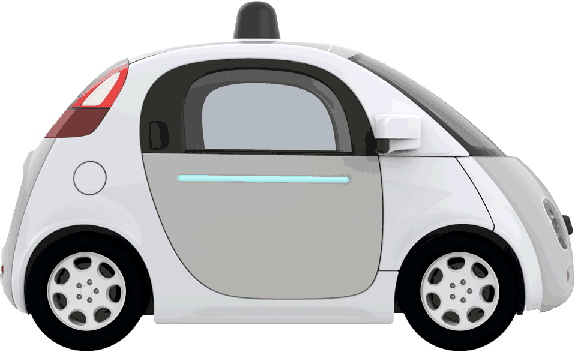Self-Driving Cars
What's the roadblock?
December 14, 2015

Since the invention of the car, there have been bad drivers, and the dream of taking them off the road. Inside the United States, nearly 30,000 people die from car accidents every year, according to the National Highway Traffic Safety Administration. And if you’ve taken a health class anytime in the past ten years I’m sure you’re aware of just how dangerous getting behind the wheel could be. With obstacles like drunk drivers, cell phone users, oblivious soccer moms, and nervous teenagers, a majority of hazards on the road come from inside the vehicle. The solution to this is taking the driver out of the situation, and removing the aspect of human error. More than just the idea of cleaning up the streets however, driver-less cars have epitomized the future, embedding themselves into science fiction classics and mainstream media. While that dream seems closer than ever before, the road to get there is still cluttered. Let’s take a look at the fact and the fiction surrounding self-driving vehicles.
Before we dive in, it’s important to know the different kinds of self-driving vehicles, and where we draw the line. When we think of a car like this, the first thing that comes to mind is something that completely drives itself. This is what we would call a totally autonomous vehicle, and popularized in movies like Minority Report, these cars wouldn’t need input from the driver at all. True driver-less vehicles would look less like the cars we know and love, and more like a room on wheels, with sensors and cameras to top them off. These cars might not even feature a steering wheel or gas pedal.

The other kind of self-driving car is one closer to what we drive today, but retrofitted with sensors that let it drive itself. This is done through systems like Adaptive Cruise Control (ACC), and Smart Lane Switching. These technologies allow for the car to read road-signs and adapt speeds, stay inside of marked lines on a road, and even slow down or stop if it senses traffic ahead. Cars like this already exist on the market, namely the Tesla Model S, and you can watch a jaw dropping demo of this down below.
So if we have these technologies, where are they today? Well, a lot of time and testing goes into products like this. Google’s Self Driving Car Project has totaled over 1 million miles of testing, and is finally starting to branch off onto public roads in California and Texas. The legality of these vehicles also presents an issue. Currently testing of autonomous vehicles is only legal in Nevada, Florida, California, Michigan and the District of Columbia. As the technology improves and becomes more mainstream however, we’ll see more states start to address this issue.
In the future, driver-less cars could solve a lot of issues. From tackling road rage, to serving as taxis, cars that could drive themselves would have thousands of potential applications. In the meantime though, we can only push for the advancement of this technology, and keep our eye on the road ahead.